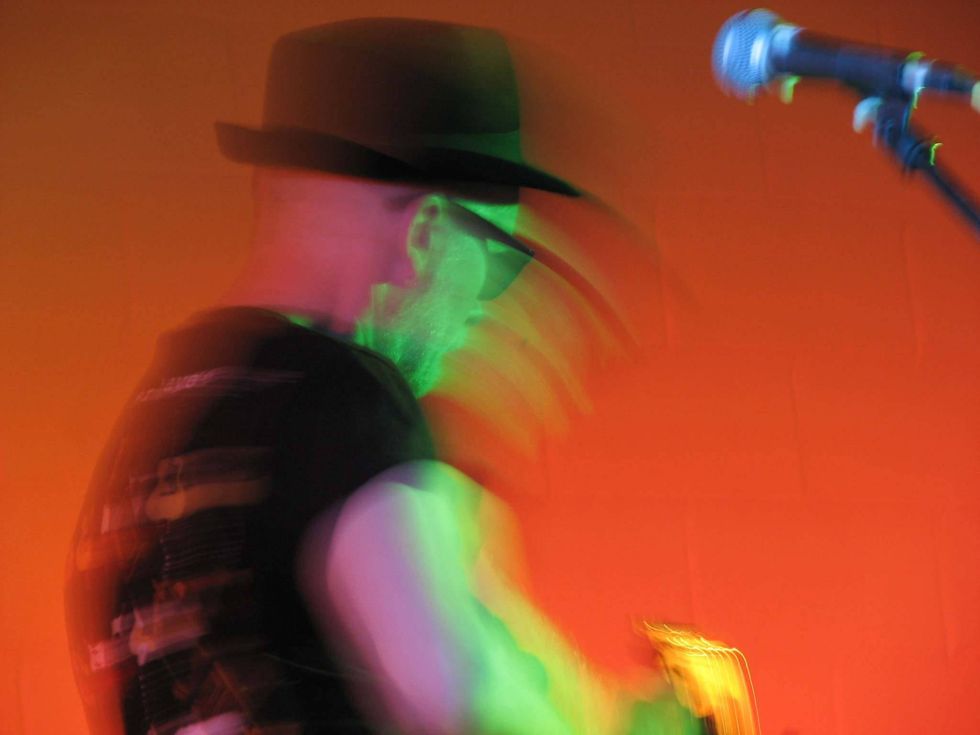The Jaguar debuted in 1962 as Fender's top electric guitar model. It had an offset body shape very much like the Jazzmaster, which was introduced in 1958, along with new features, including a 24"-scale, 22-fret neck, and tall, narrow pickups with metal surrounds to decrease noise. The shorter scale and high-output pickups were meant to attract guitarists who played Gibsons. Among the model's other novel elements were on/off switches for both pickups and the guitar's tone circuits, a lead/rhythm selector switch, separate volume and tone controls for lead and rhythm settings, and a foam string mute attached to the bridge.
The Jaguar was a modernist's instrument designed to compete with Gibsons, with lead and rhythm circuits controlled by switches and rollers on the guitar's upper and lower bouts.
This is how the 1966 Fender catalog described the mute: Another “Fender First" is a special string mute conveniently mounted at the bridge. The “Fender Mute" is easily switched from open to muted position, thus providing rapid playing style changes. With the mute, it is no longer necessary to remove the bridge cover to dampen the strings for special effects used by many guitarists." Despite Fender's enthusiasm, the mute feature ended up being ignored, since most proficient players preferred using the palm of the hand.
While Jaguars never became accepted by Gibson players in the manner Fender hoped, they did briefly become the instrument of choice for surf guitarists of the mid-'60s. The Jaguar's popularity faded by the end of that decade, as musical tastes changed, and the model was ultimately discontinued in 1975. The axe didn't find favor again until alternative-rock and grunge bands rediscovered it in the '90s. The 1962 version of the Jaguar was reissued in the U.S. in 1999 and several versions continue to be made today.
Original-generation Jaguars came with stock single-coil pickups that were tall and narrow, with metal surrounds
to decrease noise.
The 1966 Jaguar bearing serial number 123729 spotlighted this month has the typical features for that year, including a gold “transition" Fender logo decal on the headstock, a bound dot-inlayed rosewood fretboard, and a tortoise shell pickguard. Large block inlays became standard by 1967. Beginning that year, Kluson tuners were replaced by Fender-designed “F"-stamped keys made by Schaller in Germany. The same backwards “F" was also stamped boldly on the neck plate. This guitar has a see-through blonde finish over an ash body. An alder body was used for sunburst or solid-color guitars. The custom color option on this guitar was an $18 upcharge.
The headstock sports a gold transition-era Fender logo decal and Kluson tuners. A year later, Fender-designed “F"-stamped keys made by Schaller in Germany replaced the Klusons.
The 1966 list price for a Jaguar with a blonde finish was $386 plus $52.50 for the case. The current value for this example in excellent all-original condition is $4,000.
Sources for this article include Fender: The Sound Heard 'Round the World by Richard R. Smith, 50 Years of Fender: Half a Century of the Greatest Electric Guitars by Tony Bacon, The Fender Book: A Complete History of Fender Electric Guitars by Tony Bacon and Paul Day, and Fender: The Golden Age, 1946–1970 by Martin Kelly, Terry Foster, and Paul Kelly.


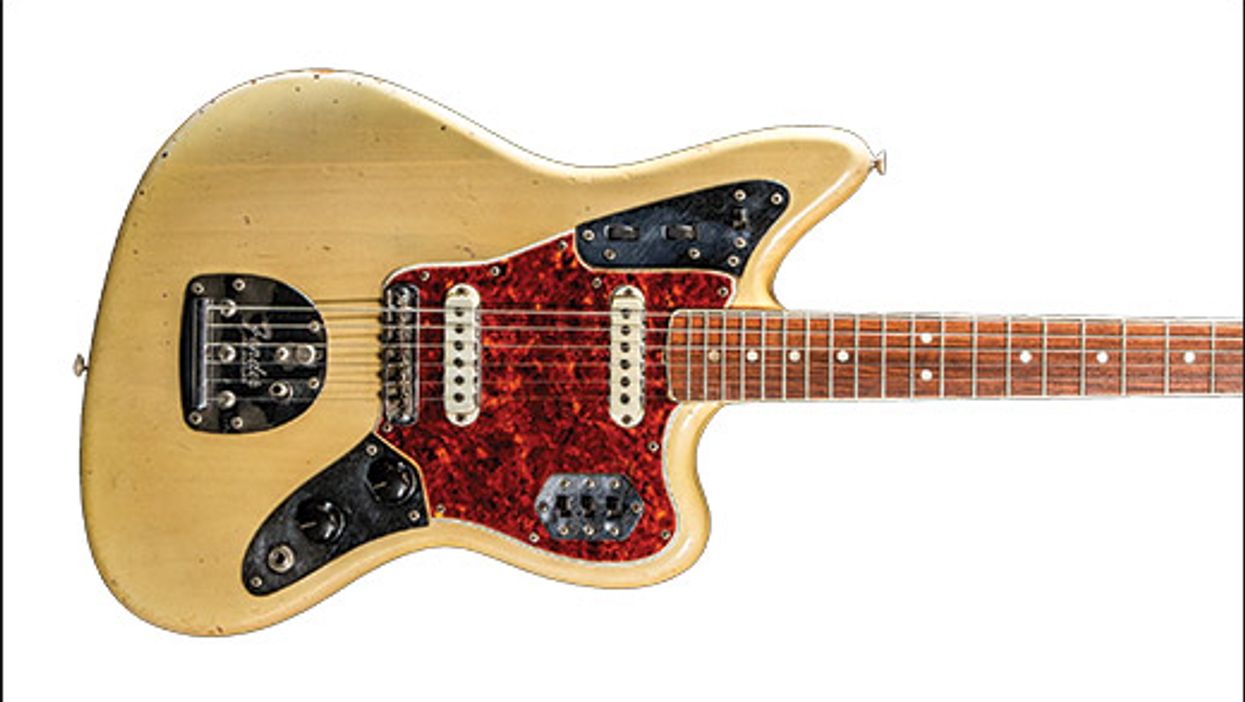
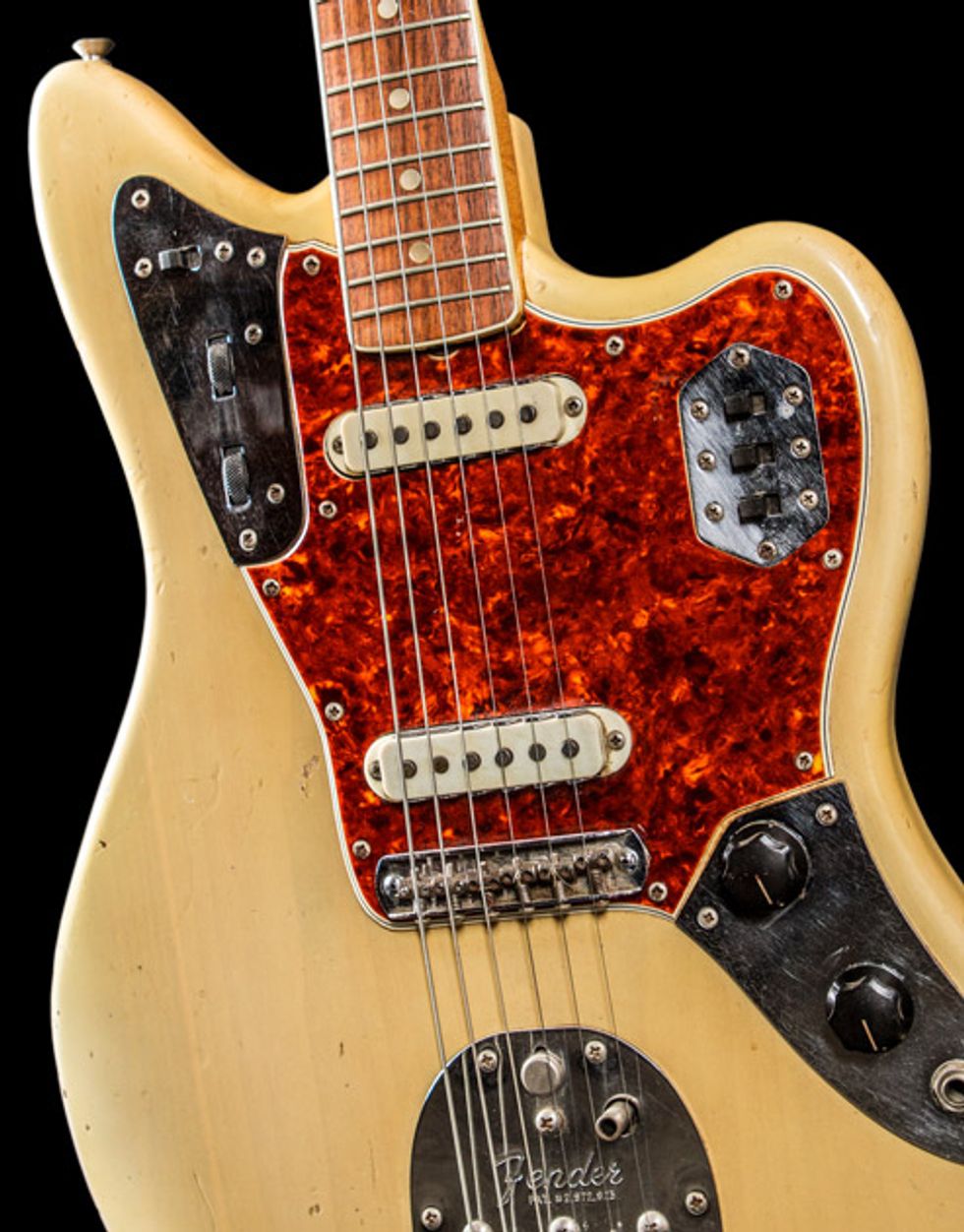
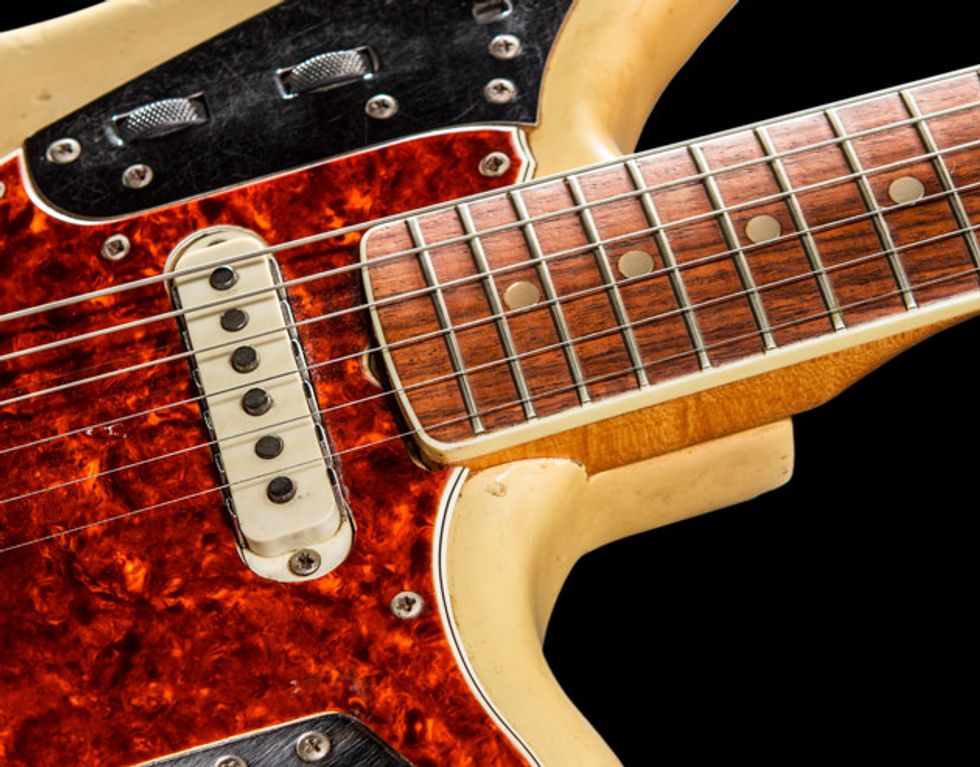
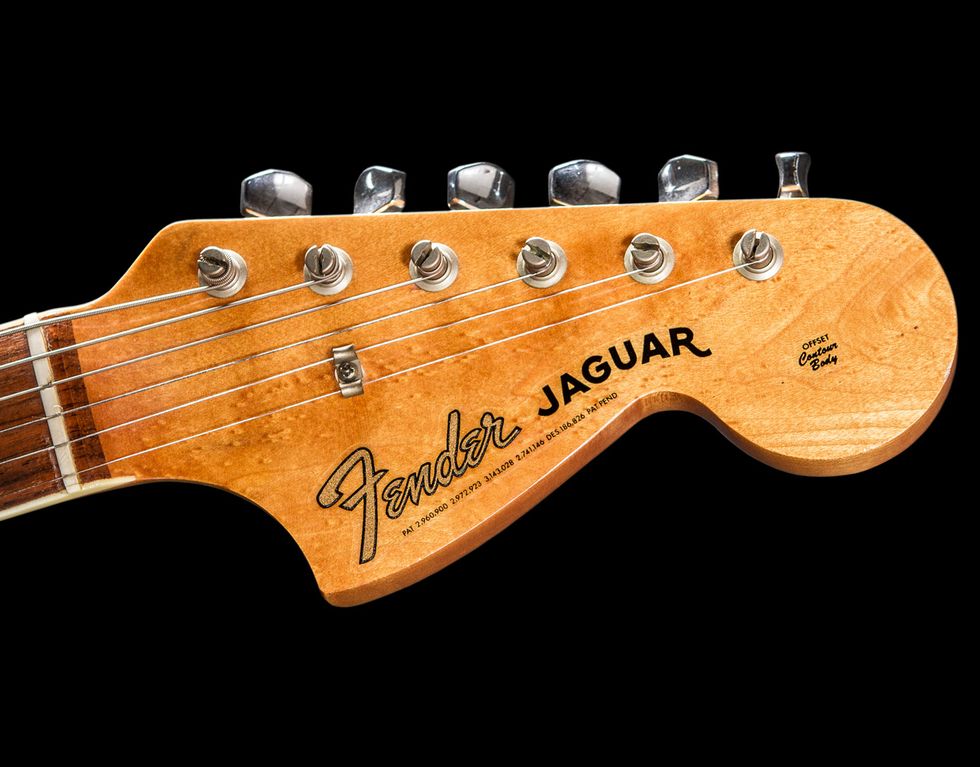








![Rig Rundown: Russian Circles’ Mike Sullivan [2025]](https://www.premierguitar.com/media-library/youtube.jpg?id=62303631&width=1245&height=700&quality=70&coordinates=0%2C0%2C0%2C0)







